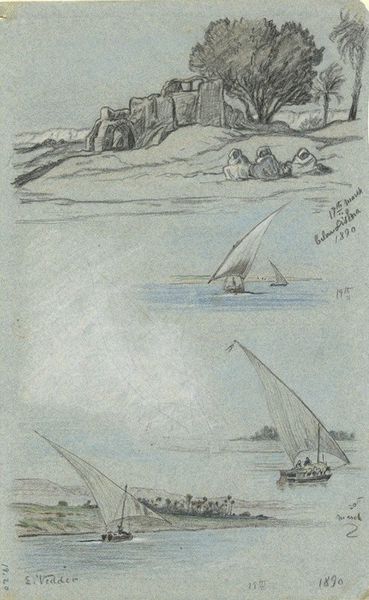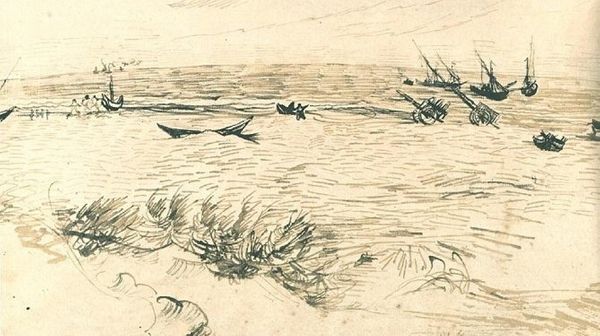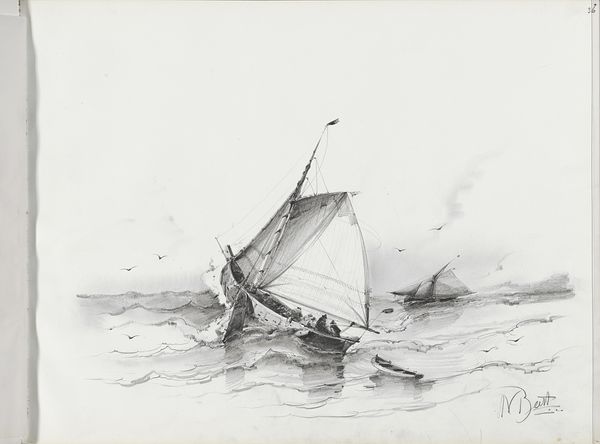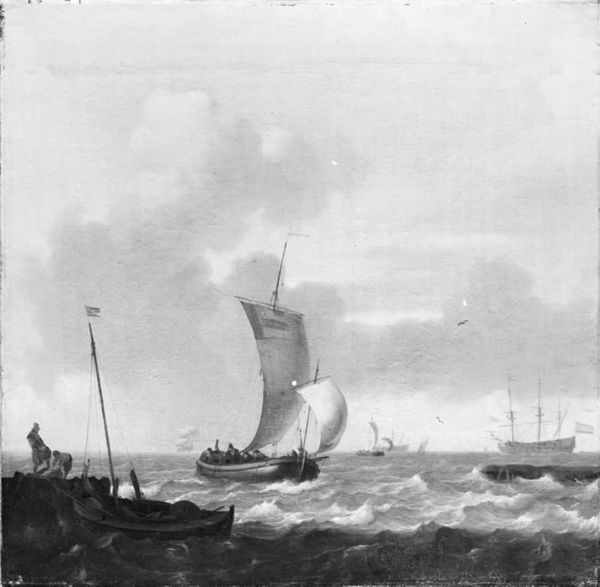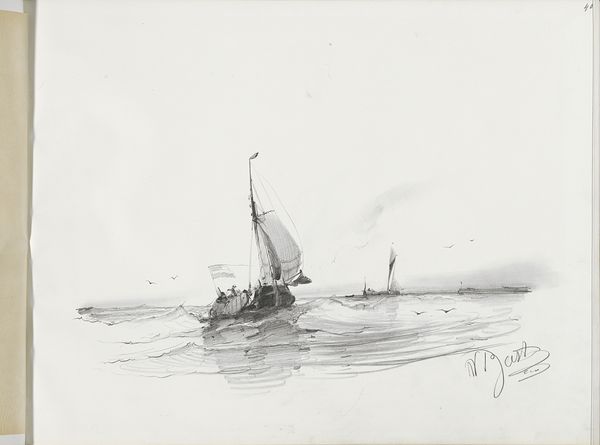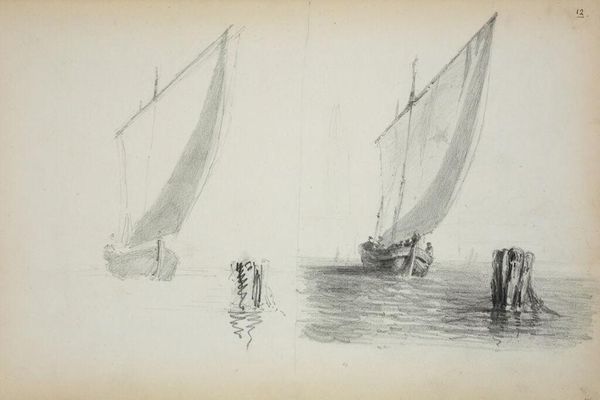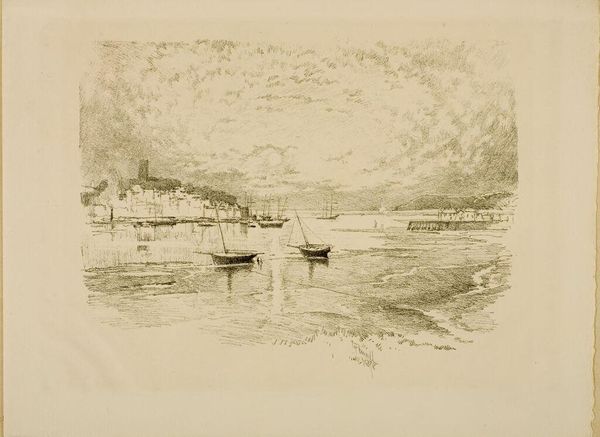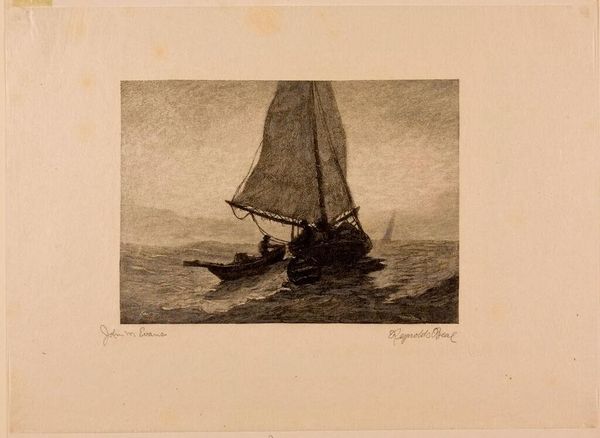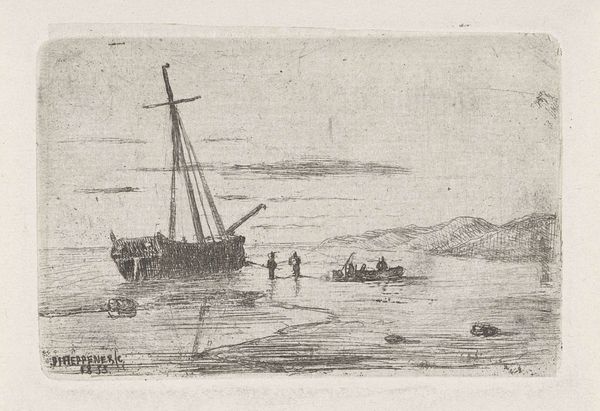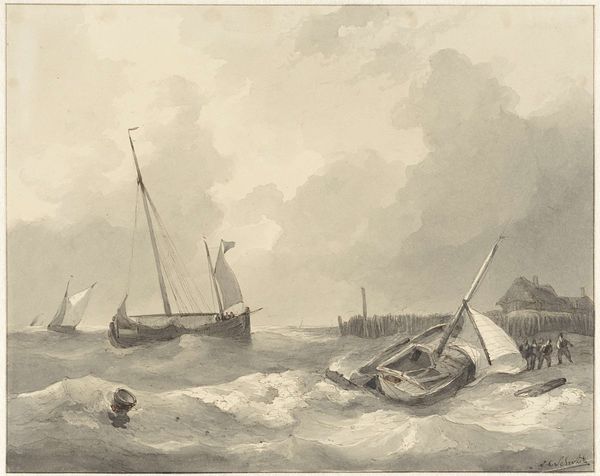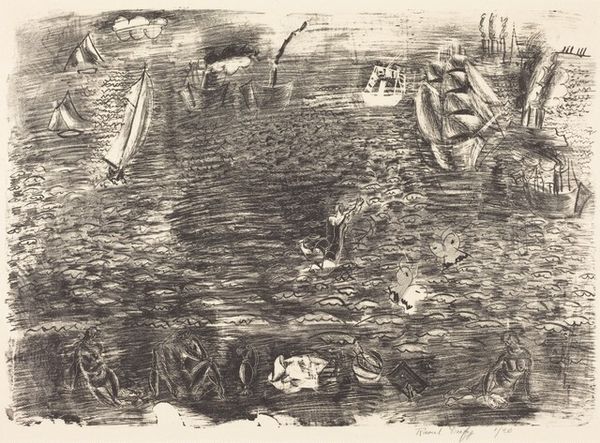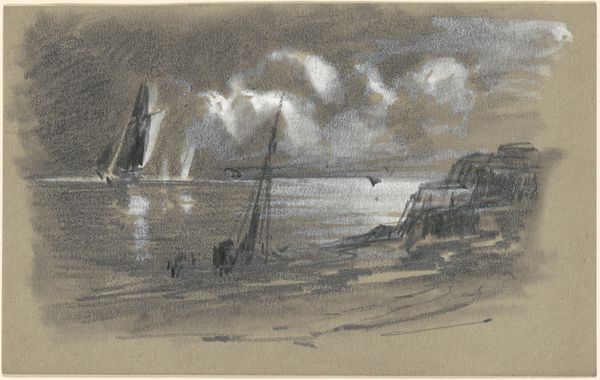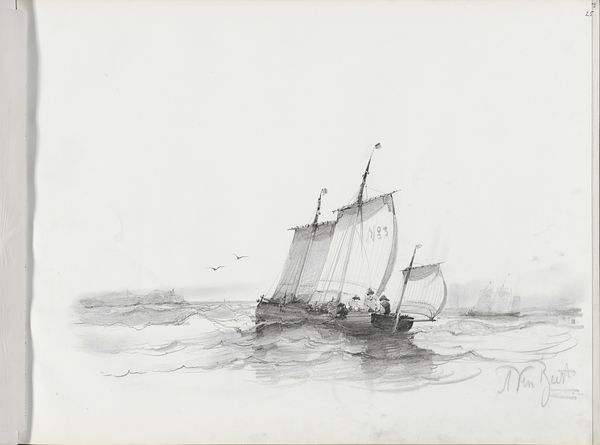
Copyright: Ivan Albright,Fair Use
Editor: Right, let’s talk about Ivan Albright’s 1969 pencil and charcoal drawing, “Tahiti”. At first glance, it feels like a hazy memory, all muted greys and soft lines. The little boat with people in the foreground gives the immensity of the sea some scale, and somehow imbues the drawing with a sense of movement. How do you interpret this work? Curator: Ah, "Tahiti." You’re right; there’s a wistful, almost dreamlike quality to it. Imagine Albright, known for his meticulous, almost grotesque depictions of decay, suddenly sketching this breezy seascape. It’s as though he’s momentarily escaped into a daydream! I think he captures Tahiti as more of a fleeting impression rather than a literal depiction of the place. And maybe that's the essence of Tahiti: less a place, and more an idea. What feelings does it conjure in you? Editor: That feeling of escape, definitely! And the use of pencil and charcoal really emphasises that dreamlike, transient quality. But how does this fit in with Albright’s overall body of work, so preoccupied with decay and mortality? Curator: Excellent question! Perhaps, “Tahiti” becomes an exercise in reflecting life by depicting its counterpoint—an idealistic place where things do not necessarily decay. It stands as a blip within Albright's overarching portfolio – what do you think the significance of its making was to Albright at this moment in time? Editor: Perhaps a reminder to him of something… more optimistic. This has helped me appreciate the tension within Albright’s oeuvre. Thank you for offering an unusual viewpoint of the Artist at a key turning point. Curator: You’re most welcome! It’s often in these seeming deviations that we discover an artist’s deepest desires, a yearning that flickers beneath the surface.
Comments
No comments
Be the first to comment and join the conversation on the ultimate creative platform.
